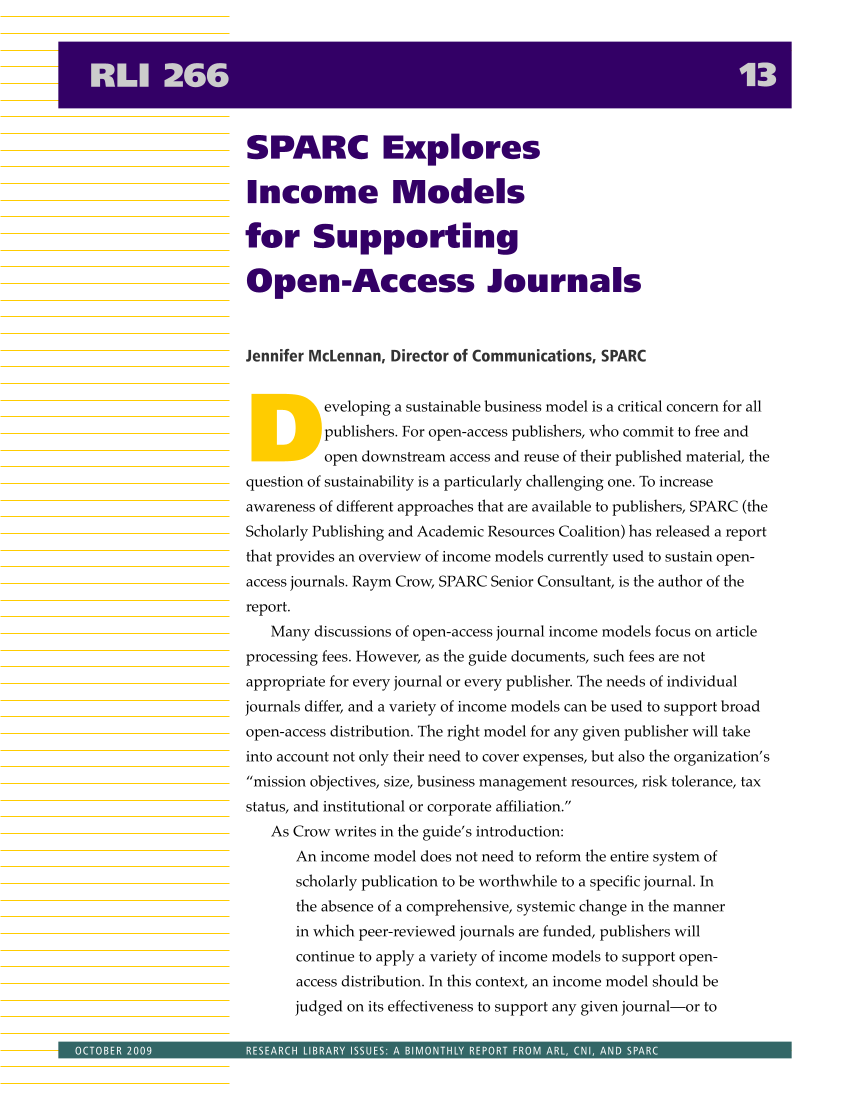SPARC Explores Income Models for Supporting Open-Access Journals Jennifer McLennan, Director of Communications, SPARC D eveloping a sustainable business model is a critical concern for all publishers. For open-access publishers, who commit to free and open downstream access and reuse of their published material, the question of sustainability is a particularly challenging one. To increase awareness of different approaches that are available to publishers, SPARC (the Scholarly Publishing and Academic Resources Coalition) has released a report that provides an overview of income models currently used to sustain open- access journals. Raym Crow, SPARC Senior Consultant, is the author of the report. Many discussions of open-access journal income models focus on article processing fees. However, as the guide documents, such fees are not appropriate for every journal or every publisher. The needs of individual journals differ, and a variety of income models can be used to support broad open-access distribution. The right model for any given publisher will take into account not only their need to cover expenses, but also the organization’s “mission objectives, size, business management resources, risk tolerance, tax status, and institutional or corporate affiliation.” As Crow writes in the guide’s introduction: An income model does not need to reform the entire system of scholarly publication to be worthwhile to a specific journal. In the absence of a comprehensive, systemic change in the manner in which peer-reviewed journals are funded, publishers will continue to apply a variety of income models to support open- access distribution. In this context, an income model should be judged on its effectiveness to support any given journal—or to RLI 266 13 OCTOBER 2009 RESEARCH LIBRARY ISSUES: A BIMONTHLY REPORT FROM ARL, CNI, AND SPARC



























